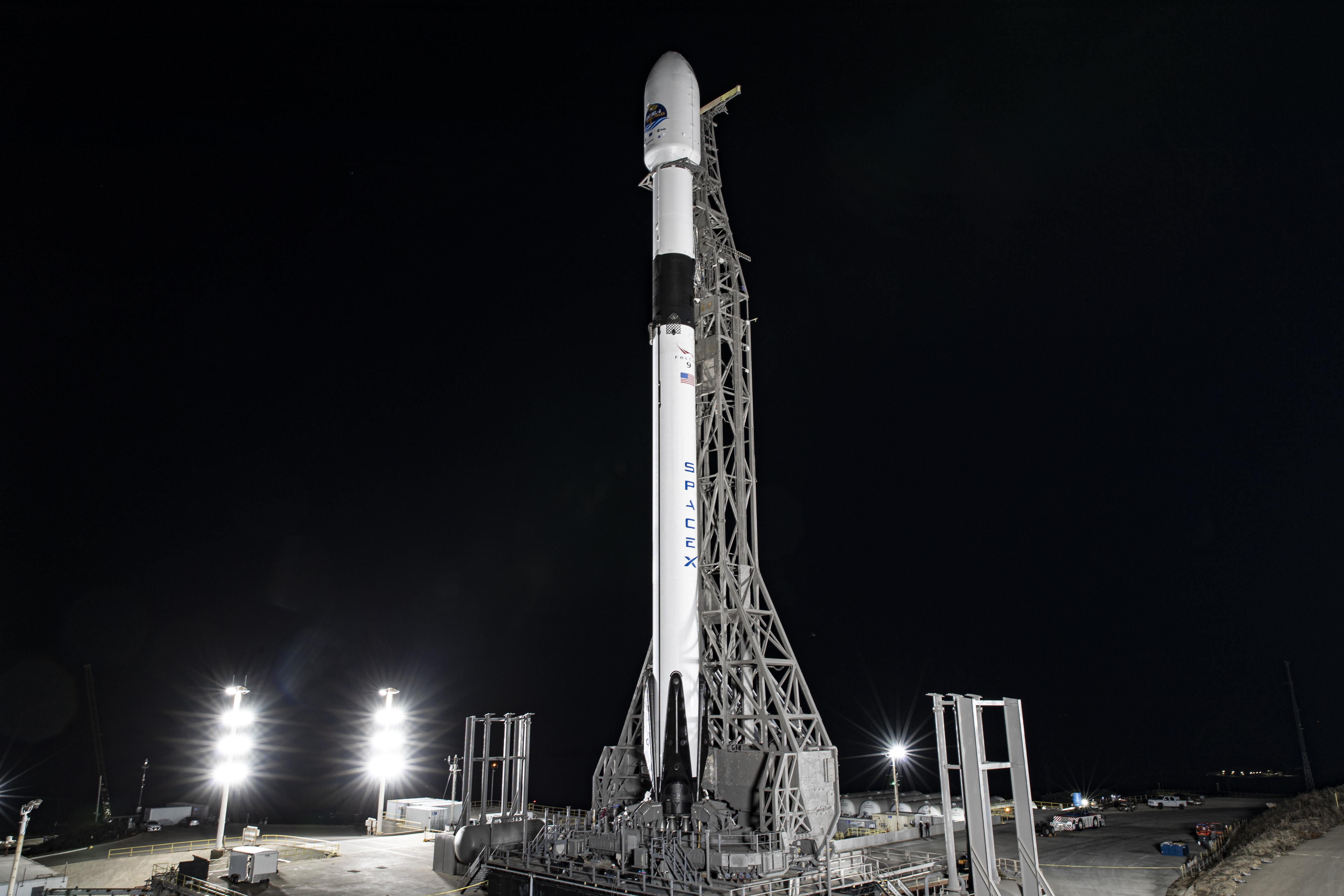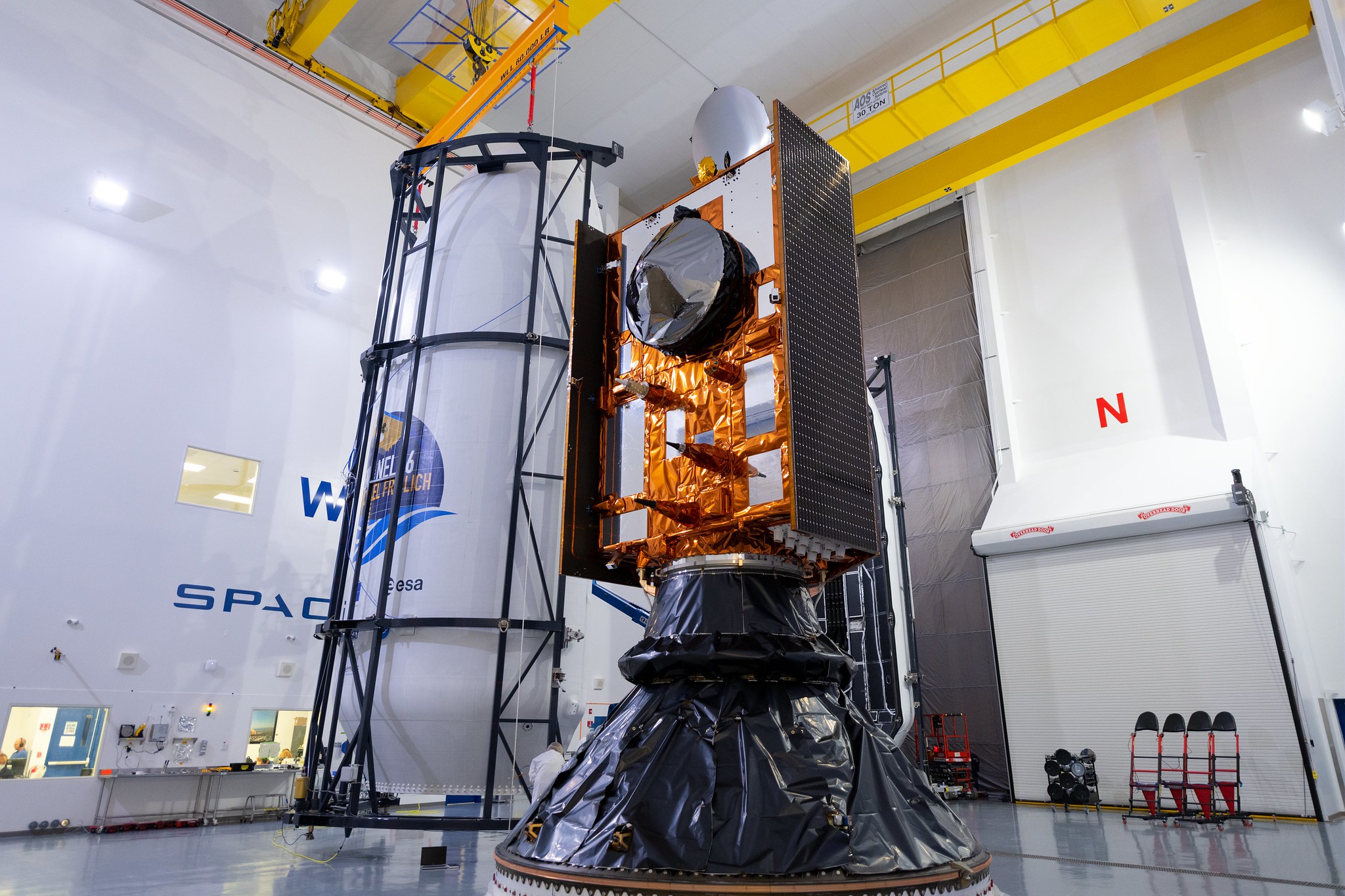SpaceX could launch back-to-back rocket missions from two coasts this weekend. Here's how to watch.
SpaceX launches Sentinel-6 on Saturday and potentially a Starlink flight Sunday.
CAPE CANAVERAL, Fla. — SpaceX is gearing up for a potential launch double header this weekend. The California-based spaceflight company will attempt to launch two rockets from two different coasts in a little over 24-hours.
On Saturday (Nov. 21), the private spaceflight company will launch an Earth-observing satellite for NASA, followed by a batch of Starlink satellites on Sunday (Nov. 22) and you can watch the action online.
The Sentinel-6 mission is scheduled to blast off at 12:17 p.m. EST (9:17 a.m. local time and 1717 GMT) from Space Launch Complex 4 at Vandenberg Air Force Base in California, on a five-year mission to map sea rise associated with global warming. You can watch it live here on Space.com, courtesy of NASA TV.
If all goes as planned, approximately 24-hours later, another Falcon 9 rocket will lift off from Space Launch Complex 40 at Cape Canaveral Air Force Station here in Florida. The flight is scheduled to blast off at 9:56 p.m. EST (0256 GMT on Nov. 23) on a SpaceX Falcon 9 rocket carrying a full stack of 60 Starlink satellites.
You can watch that launch live here and on the Space.com homepage, courtesy of SpaceX, or you can watch the launch directly from SpaceX here about 15 minutes before liftoff.
Related: See the evolution of SpaceX's rockets in pictures
SpaceX has already had a banner year as the private spaceflight company has now launched two different astronaut missions to the International Space Station (ISS) in the past six months, marking the first time a commercial company has done so.
Get the Space.com Newsletter
Breaking space news, the latest updates on rocket launches, skywatching events and more!
With these two launches, the company will celebrate its busiest launch year yet, surpassing 2018's record of 21 launches. The flights will also mark the 99th and 100th flight of a Falcon 9 rocket. Last month, the California-based aerospace company reached its centennial milestone of 100 flights for its Falcon series of rockets, which also included the Falcon 1 and Falcon Heavy. The company released a video highlighting that achievement.
It will also bring the landing tally up to 67, if both rockets land as expected. Earlier this year, SpaceX moved its former West Coast based drone ship “Just Read the Instructions” to the East Coast, joining “Of Course I Still Love You”. The company has kept both ships pretty busy this year as it set a rapid launch pace.
As such, the Sentinel-6 mission launching from Vandenberg will land at an onshore landing pad, adjacent to where it launched. The company will then begin the inspection process and get the booster back into launch rotation.

Currently, weather is 80% go for the launch opportunity on Saturday, but NASA does have a backup launch time on Sunday at 12:04 p.m. EST (9:04 a.m. local time and 1704 GMT). Sunday’s Starlink launch also has favorable weather conditions, with the 45th Space Wing predicted a 70% chance of good weather Sunday evening. The only cause for concern being liftoff winds and cumulus clouds.
Originally, SpaceX had planned on pulling a true launch double header by launching two missions from two coasts on the same day. However, when the company rolled its Starlink booster to the pad for prelaunch testing, the company appears to have aborted the test and instead chose to move the launch to Sunday evening.
During a prelaunch briefing for the Sentinel-6 mission, SpaceX said that the company was focusing on the California launch and if it was able to get off the ground on Saturday, then it would turn its attention to Starlink on Sunday.
"We will be prioritizing the Sentinel six mission accordingly," said Julianna Scheiman of SpaceX during a prelaunch briefing on Friday Nov. 20. "And if needed, we will hold the Starlink launch. Right now the Starlink launch is scheduled for Sunday after our Sentinel-6 launch."
If all goes as planned and the launch is able to fly on Sunday, it will mark the company’s 16th batch of Starlink satellites launched into space.
SpaceX hopes to provide high-speed internet access to users around the world through its burgeoning Starlink megaconstellation. By using a small terminal (no larger than a laptop), users on the ground will be able to connect to the ever-growing network. That network is now in a public beta-testing phase, and could roll out to the public later this year.
Related: SpaceX's Starlink satellite megaconstellation launches in photos

SpaceX is expected to continue its tradition of recovering the Falcon 9's payload fairing, or nose cone, on Sunday's flight. The company has two net-equipped boats — called GO Ms. Tree and GO Ms. Chief — that it uses snag the fairings as they fall back to Earth in two pieces.
Each piece of the clamshell-like hardware, which cost approximately $6 million combined, is outfitted with software that navigates it to the recovery zone, and a parachute system that lets them gently land in the ocean or the outstretched net of GO Ms. Tree and GO Ms. Chief.
The boats are also able to scoop the fairings up out of the water as making a midair catch is tricky and dependent upon several factors, like weather and winds. It's unclear yet which of the fairing catchers will be used in Sunday’s Starlink mission.
Since there are no fairing catchers on the West Coast, SpaceX has deployed a different recovery vessel — called NRC Quest — out in the Pacific that will fish the Sentinel-6 fairings out of the water for eventual reuse.
Follow Amy Thompson on Twitter @astrogingersnap. Follow us on Twitter @Spacedotcom or Facebook.
Join our Space Forums to keep talking space on the latest missions, night sky and more! And if you have a news tip, correction or comment, let us know at: community@space.com.

Amy Thompson is a Florida-based space and science journalist, who joined Space.com as a contributing writer in 2015. She's passionate about all things space and is a huge science and science-fiction geek. Star Wars is her favorite fandom, with that sassy little droid, R2D2 being her favorite. She studied science at the University of Florida, earning a degree in microbiology. Her work has also been published in Newsweek, VICE, Smithsonian, and many more. Now she chases rockets, writing about launches, commercial space, space station science, and everything in between.









